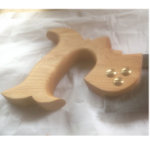Plough, Fillister, Moving Fillister, Sash Fillister, Combination planes?
Welcome! / Forums / General Woodworking Discussions / Tools and Tool Maintenance/Restoration / Plough, Fillister, Moving Fillister, Sash Fillister, Combination planes?
Tagged: Combination planes, Fillister planes, Moving Fillister planes, Plough planes, Sash Fillister planes
- This topic has 12 replies, 8 voices, and was last updated 10 years, 6 months ago by
bsddude.
-
AuthorPosts
-

Hi all!
I’m wondering if someone could briefly explain the difference between the following type of planes. I’m guessing there is some overlap?
Plough planes, Fillister planes, Moving Fillister planes, Sash Fillister planes, Combination planes.
Many thanks!
Dave
Edit: P.S. In case someone can instead point me to a good online resource that answers my question then I’ll be happy to read/watch it. Many thanks in advance!
 28 December 2013 at 10:56 pm #24731
28 December 2013 at 10:56 pm #24731Plough plane for groove and dado’s. Fillister planes have fixed rebate width but I believe have a depth stop. Moving fillister plane has a ajustable fence and depth stop. Sash filister plane has two sides to it and has a fence and a depth stop one side is for doing a rebate the other is to do to moulding like an ovolo. Use to make sash bars for windows.
A combination plane can perform grooving beading and sash bars basically all the above. I think On the Record 405 combination plane you could also buy kits so that you could also do hollows and rounds.
Not to forget, the one plane to rule them all, the universal plane. Stanley 55, with 55 cutters to take the place of all the previously mentioned wooden planes and moulding profile planes.
My question is, at what point do these combination/universal planes become machines? I know they are human powered, but with all the fences, spurs and depth gauges, doesn’t kind of take the “real” woodworking out of the equation and enter the machine operated woodworking?
Nonetheless, these planes are very cool!
I hope this is not another thread that turns into the only real woodworking is with hand tools saga. We have chosen hand tools, others use machines or a combination of both. Leave them alone to enjoy what the do.
I use hand tools only, but I’m not such a hand tool snob that I would never use them, or even think of it as not real woodworking. Just enjoy what you do, and let others do the same.
All the best for the New Year everyone 😉
31 December 2013 at 3:18 pm #24882I have a Stanley 45 Combination Plane with all the cutters and attachments. I find that I only use it in its stripped down mode as a plough plane. I don’t have the attachments for the hollows and rounds, and last time I checked, the prices were outrageous on eBay. So, for me, I think a basic plough plane would suffice.
Dan,
From David Pye:One of Pye’s most well-known concepts is “the workmanship of risk”, by which he means “workmanship using any kind of technique or apparatus, in which the quality of the result is not predetermined, but depends on the judgment, dexterity and care which the maker exercises as he works (The Nature and Art of Workmanship, p.20)
I think the Stanley 55 falls well within the bounds above, and not within the machine realm which serves to mitigate the risk at the expense of skill.
Best,
CraigKen, this wasn’t intended on being a question like that. As, I continue to learn the craft I try to find a balance between time in the shop developing a skill and cost of the tools. And I wonder if sometimes a machine is a better option than using a tool. Just thoughts I ponder in the car to and from work.
Steve, that’s primarily what I use my Stanley 50 for, but I would like using the beading profiles and also the tongue and grove blades .
Craig, that’s a nice quote. I used the Stanley 78 last weekend to make a small cabinet and even with the depth stop and fence it still requires a bit of skill and attention to detail to ensure the rabbets are square and flat.
cheers!
I have and use the Record 405 combination plane. It’s a wonderful ‘hand’ tool and not a machine in any sense of the word. It’s no different than using and adjusting your #4 hand plane. It’s a hand held device that must be used and adjusted by hand and eye.
There are no motorized or moving parts, it’s just you and the hand tool. It does only what you are able of making it do.
If it hasn’t got a motor, doesn’t use electricity or any other type of power source besides you, it’s a hand tool. When grain was ground by hand between two stones it was a hand tool. When wind and water powered mills came along it became machinery. So if it’s got it’s own power source ‘It’s a Machine’.
Best and happy New Year,
Joe B.
Dan,Steve,
If you go here:
http://www.stanleytoolparts.com/plblir.html
You can search around for the cutters.
They’re marked as discontinued, BUT with a link to Servicenet that shows quite a few items are still available.
Dan,
One thing that helps in using the rebate plane which wants to wander even with good side pressure, is to set the blade slightly proud (about the thickness of a business card) on the inboard side. Charles Hayward covers this in at least two of his books. Really helps.
Best,
CraigDan,
I assume you’re using the fence with the 78.
I’m using a Record 778–same diff.
I’ve added a 3/8 x 1″ aux. fence to mine and position the work level with the edge of the bench so that the fence has more surface to run against. This seems to help with the tendency to lean over. Still it does take some extra concentration and deliberation for each swipe not to get off track.
Best,
CraigI just bought a Stanley 45 on ebay. I was the only bider and got it for $32 plus shipping. It only has one cutter, but if I can’t buy a set on ebay next week I will just make a set. I have a small machine shop setup with heat treat oven, so its no big deal. I will post pics when it gets here.
-
AuthorPosts
- You must be logged in to reply to this topic.
